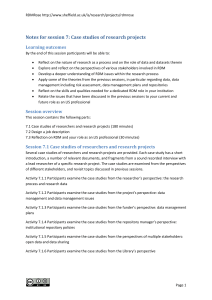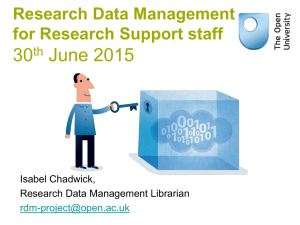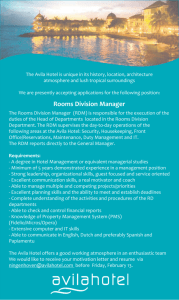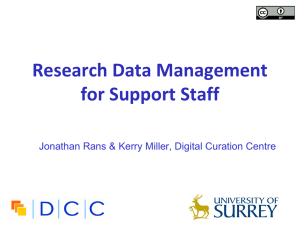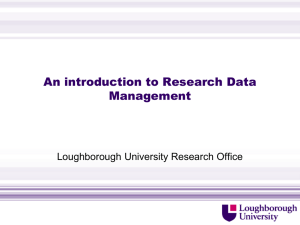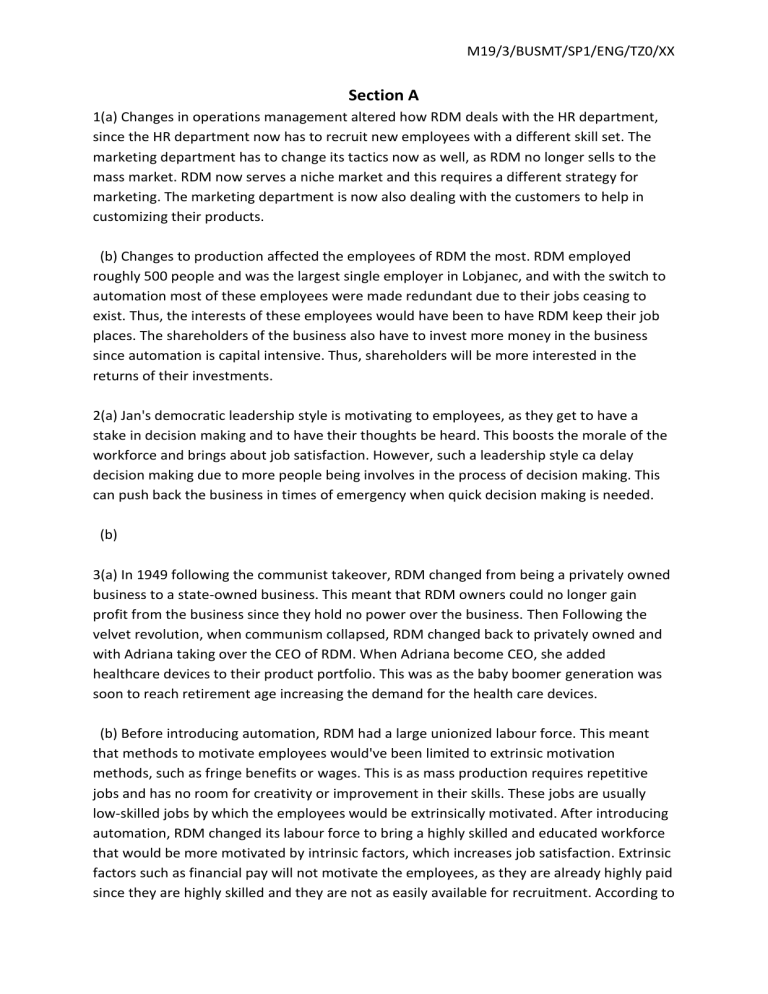
M19/3/BUSMT/SP1/ENG/TZ0/XX Section A 1(a) Changes in operations management altered how RDM deals with the HR department, since the HR department now has to recruit new employees with a different skill set. The marketing department has to change its tactics now as well, as RDM no longer sells to the mass market. RDM now serves a niche market and this requires a different strategy for marketing. The marketing department is now also dealing with the customers to help in customizing their products. (b) Changes to production affected the employees of RDM the most. RDM employed roughly 500 people and was the largest single employer in Lobjanec, and with the switch to automation most of these employees were made redundant due to their jobs ceasing to exist. Thus, the interests of these employees would have been to have RDM keep their job places. The shareholders of the business also have to invest more money in the business since automation is capital intensive. Thus, shareholders will be more interested in the returns of their investments. 2(a) Jan's democratic leadership style is motivating to employees, as they get to have a stake in decision making and to have their thoughts be heard. This boosts the morale of the workforce and brings about job satisfaction. However, such a leadership style ca delay decision making due to more people being involves in the process of decision making. This can push back the business in times of emergency when quick decision making is needed. (b) 3(a) In 1949 following the communist takeover, RDM changed from being a privately owned business to a state-owned business. This meant that RDM owners could no longer gain profit from the business since they hold no power over the business. Then Following the velvet revolution, when communism collapsed, RDM changed back to privately owned and with Adriana taking over the CEO of RDM. When Adriana become CEO, she added healthcare devices to their product portfolio. This was as the baby boomer generation was soon to reach retirement age increasing the demand for the health care devices. (b) Before introducing automation, RDM had a large unionized labour force. This meant that methods to motivate employees would've been limited to extrinsic motivation methods, such as fringe benefits or wages. This is as mass production requires repetitive jobs and has no room for creativity or improvement in their skills. These jobs are usually low-skilled jobs by which the employees would be extrinsically motivated. After introducing automation, RDM changed its labour force to bring a highly skilled and educated workforce that would be more motivated by intrinsic factors, which increases job satisfaction. Extrinsic factors such as financial pay will not motivate the employees, as they are already highly paid since they are highly skilled and they are not as easily available for recruitment. According to Daniel pink's theory, intrinsic factors include autonomy, mastery, and purpose. These employees will have to feel they are part of a bigger cause to fulfill purpose. This is fulfilled by the strong corporate social responsibility RDM shows when sourcing their materials and caring for the environment. To fulfill autonomy, workers have to have some choice in their jobs, which is fulfilled by Jan's democratic style. Section B 4(a) A specific location could be chosen for production when considering the availability, quality and cost of labour in a location and the infrastructure of a location. (b)(i) payback period = 64,000,000/ 16,000,000 = 4 years (ii) ARR = (80,000,000 – 64,000,000)/5/64,000,000) x 100 = 5% (c) One form of financial motivation that RDM could use is profit related pay which involves linking profit that RDM makes with the salaries payed to their employees in the form of annual bonuses. Profit related pay is used to strengthen employee loyalty and to foster team spirit, this could improve the efficiency of RDM. Another form of financial reward is performance-related pay which rewards workers or teams that reach a certain target. This may motivate employees to reach more targets increasing the efficiency of which RDM could design products for their customers and increase revenue. (d) Option 1 provides RDM with more autonomy on the layout and the function of the factory. This means that RDM would have complete control on everything regarding the building of the factory and the function of the factory until RDM decides to forfeit the factory without a predetermined time limit. This would allow RDM to increase its production capacity and achieve its goal of accessing more lucrative markets. However, the cost of this decision would be very high especially since the cost of the land in this area is high. Also, to raise such finance RDM may have to first change from private limited to public limited to raise share capital for the factory. This could expose RDM to a drastic change regarding ownership since it was a family business since its founding in 1873, so Jan risks control being lost to a takeover from other competitors. Also, location A is in an economically depressed area, which could mean that the infrastructure of the location isn't of high quality which could present hardships while operating the factory since it's very highly automated. This also means that it would be harder to recruit highly skilled employees for the factory since its highly automated. Option 2 would be less costly for RDM since RDM only has to pay the cost of the equipment which is 6,000,000 dollars only making the cost considerably less than the cost of investment for option 1. This means that RDM may be able to raise the capital required from the profits of the business or from loan capital without risking loss of control to other competitors in the same industry. Also, RDM would get to fulfill it goal of increasing its production capacity to be able to reach lucrative markets. However, RDM will have to pay an ongoing cost of 150,000 dollars yearly for the twenty engineers that would train ZI employees, which could lower the liquidity of the business since it's an ongoing payment RDM would have to pay. Also, this means that twenty of RDM's employees would no longer contribute any work to RDM since these employees would be busy with transforming ZI's factory. This means that RDM may have to employ more employees to fill the vacant job roles in RDM which also increases the costs of RDM. Moreover, by having RDM employees train and help transform ZI's factory to an automated one, RDM would be giving up its competitive advantage to ZI since it's considered a competitor.
